Rory Lewis is highly regarded in the world of portrait photography, and he has won the Portrait of Britain award three years in a row. His work, particularly portraits of some of the world’s greatest actors, has received wide acclaim. Rory’s latest project is called Selah, and features some recognisable faces, so read on for his tips on great portraits with minimal gear.
As Rory explained to me, the good news is you don’t need a ton of expensive or complicated equipment to transform your portraits.
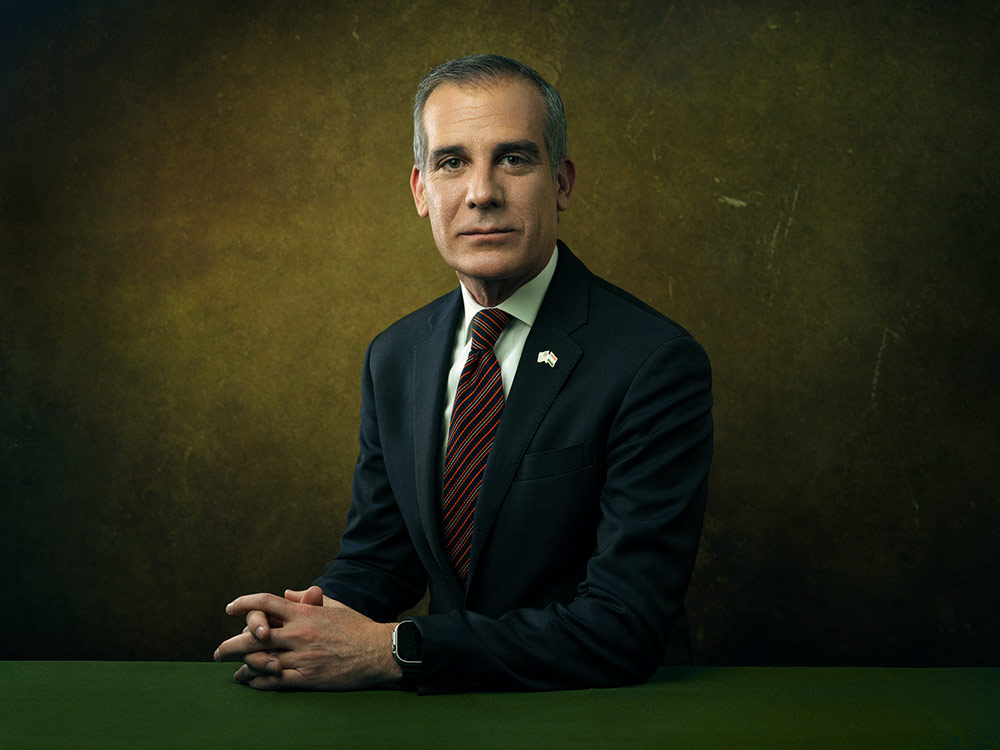
Eric Garcetti, former mayor of Los Angeles, now US ambassador to India
How did ‘Selah,’ your latest portrait project, come about?
The latest set of images in the Selah project came about through my artistic vision and inspiration from various sources. I aimed to create a series of portraits that would capture the highest moments of drama while also incorporating moments of reflection and meditation.
I drew influence from counter-reformation art and the technique of Tenebrism pioneered by Caravaggio. Put simply, Tenebrism comes from the Italian ‘tenebroso’ which means darkened and obscuring. Faces and other details are illuminated while other areas of the images are darkened.
Selah became a deeply personal endeavour. The project served as a pause for both the subjects and the viewers, a moment to breathe and reflect on the profound depths of the human experience.
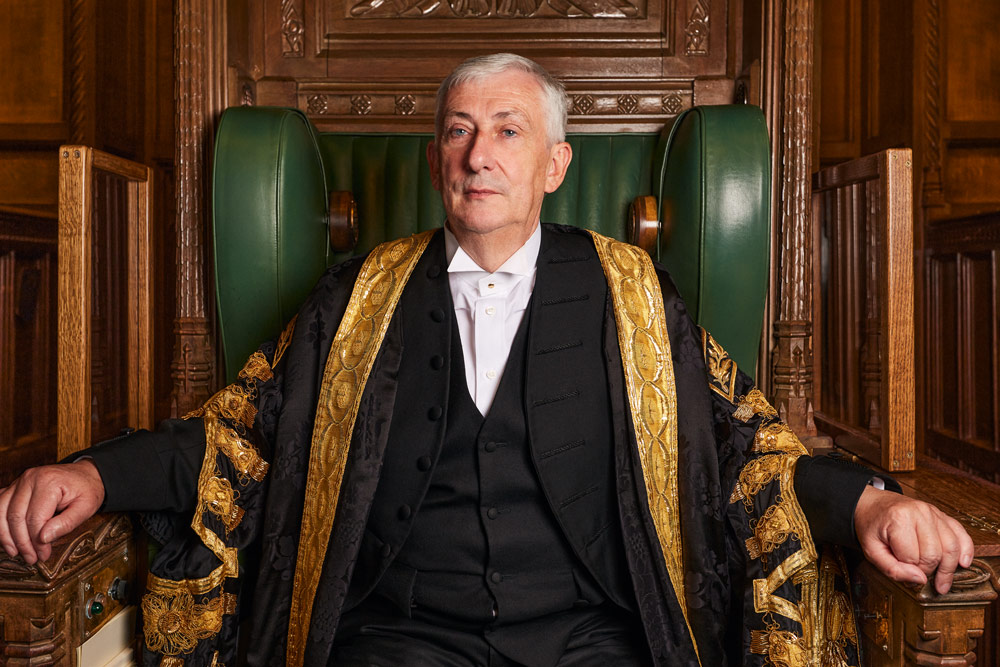
Sir Lyndsay Hoyle, speaker of the UK House of Commons
Among the notable portraits featured in the exhibition were those of esteemed actors such as Judi Dench, Michael James Shaw, and Todd Stashwick. Each of these talented individuals brought their own unique presence and depth to the series, allowing me to capture their essence in a way that went beyond mere representation.
Your lighting set-up for portraits is relatively simple – can you talk us through it?
My approach to lighting in the Selah project revolves around simplicity and portability, allowing me to capture stunning portraits both in studio settings and on location. I utilise one or two lights with a focus on using portable equipment to ensure flexibility during my sittings.
For the lighting setup, I rely on Profoto A2 flash heads, which are compact and lightweight, making them ideal for on-location shoots in hotels and apartments. These portable lights enable me to create the desired lighting effects while maintaining ease of use and manoeuvrability (A2’s cost around $995 / £995, but can be hired for much less – Ed).

Maye Musk, mother of Elon
To shape and control the light, I employ Profoto Clic softboxes ($299 / £279). These softboxes attach seamlessly to the Profoto A2’s, allowing me to achieve soft and flattering lighting that enhances the subjects’ features and brings out their unique characteristics. The use of softboxes helps to create a gentle and even illumination, ensuring that the portraits have a natural and appealing look.
The simplicity of my lighting setup is intentional, as it allows me to focus on capturing the essence of the individuals in front of my camera. By keeping the equipment streamlined, I can work efficiently and effectively, ensuring that the process remains fluid and conducive to capturing authentic and powerful portraits.
You are a committed Hasselblad user – have you ever been tempted by mirrorless cameras for your portraits?
While I acknowledge the advancements in mirrorless models and the Fujifilm GFX medium format series, I remain deeply loyal to my Hasselblad setup, particularly the Hasselblad X1D II.
There are several reasons why the Hasselblad X1D II continues to appeal to me. First and foremost, it upholds the renowned quality and heritage that the Hasselblad brand is known for. The X1D II combines cutting-edge technology with the timeless elegance and precision that Hasselblad is celebrated for, ensuring exceptional image quality.
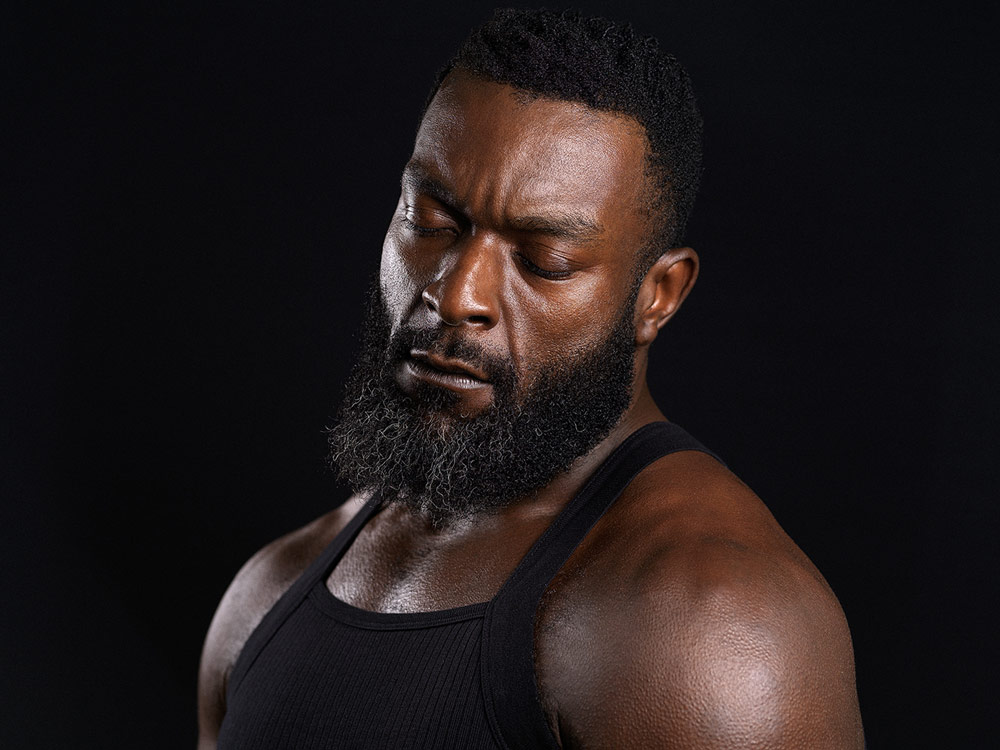
US actor, Michael James Shaw. Photo Rory Lewis
One of the key advantages of the Hasselblad X1D II is its medium-format sensor. With its larger sensor size, it allows for incredibly detailed and high-resolution images with exceptional dynamic range. This is particularly advantageous for my portrait work, as it allows me to capture intricate details and subtle nuances, resulting in stunning and impactful portraits.
Additionally, the Hasselblad X1D II’s intuitive and user-friendly interface enhances my shooting experience. The camera’s ergonomic design and intuitive controls allow for effortless operation, enabling me to focus on the creative process rather than getting bogged down by complex settings. This seamless workflow is crucial, especially during portrait sessions where I strive to establish a comfortable and relaxed atmosphere for my subjects.
What are you go-to lenses for portraits, and why?
I’ve used a variety of lenses over the years. However, my go-to portrait lens for my Hasselblad X1D II is definitely the Hasselblad 90mm f/3.2 XCD. In my opinion, it is the best portrait lens on the market.
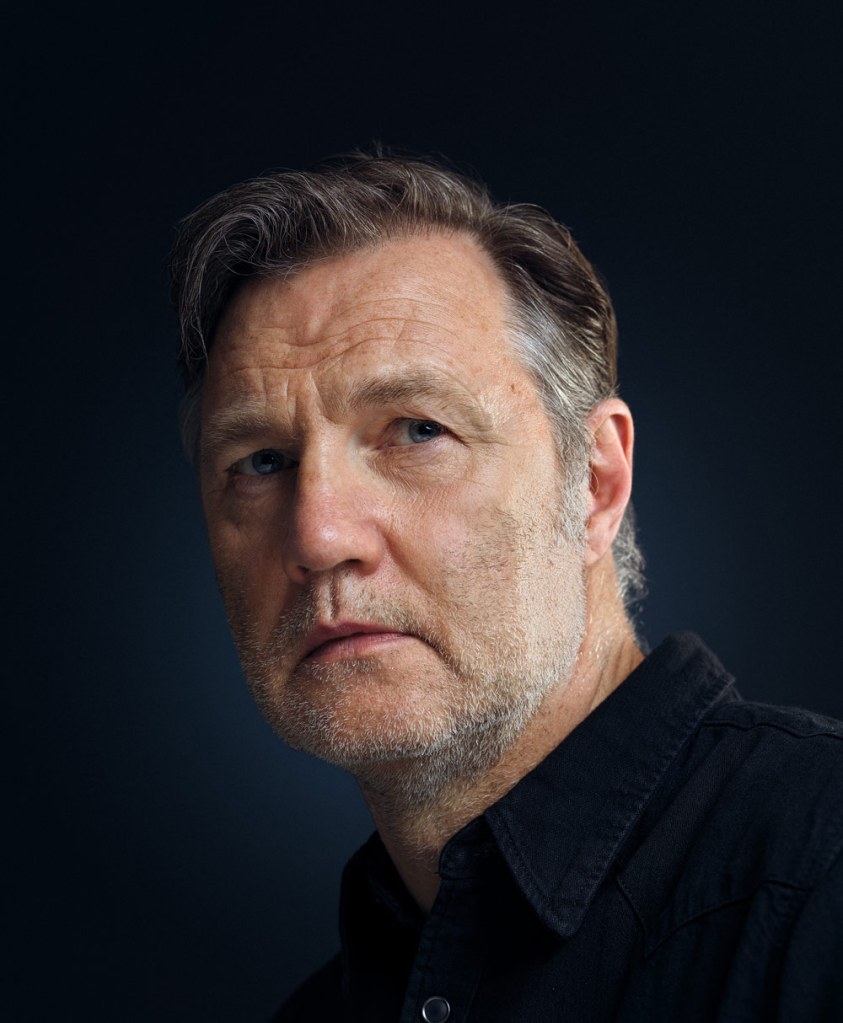
British actor David Morrissey. Photo Rory Lewis
The moderate telephoto focal length of the Hasselblad 90mm f/3.2 XCD provides a 71mm full frame equivalency, making it the perfect portrait lens. It offers just the right amount of compression and perspective distortion to flatter the subject, while still allowing me to capture the necessary detail and nuance of their facial features. The aperture range of F/3.2 to F/32 also gives me the flexibility to create a shallow depth of field for artistic effect or to achieve maximum sharpness throughout the image.
Moreover, the Hasselblad 90mm F/3.2 XCD lens elements are made from high-quality glass, which produces sharp and detailed images, and the lens barrel is constructed from lightweight yet durable materials.
You’ve done a lot celebrity portraits – have they got easier to deal with as you’ve got more experienced in portrait photography?
Working with celebrities has indeed provided me with valuable experience and insights into the dynamics of portrait photography. Over time, I have developed effective strategies to put them at ease, even when time is limited.
As I’ve gained more experience, I’ve learned that building a positive rapport with celebrities is essential. It’s important to approach each session with respect, professionalism, and a genuine interest in their craft. Celebrities often appreciate working with photographers who are knowledgeable and passionate about their work.
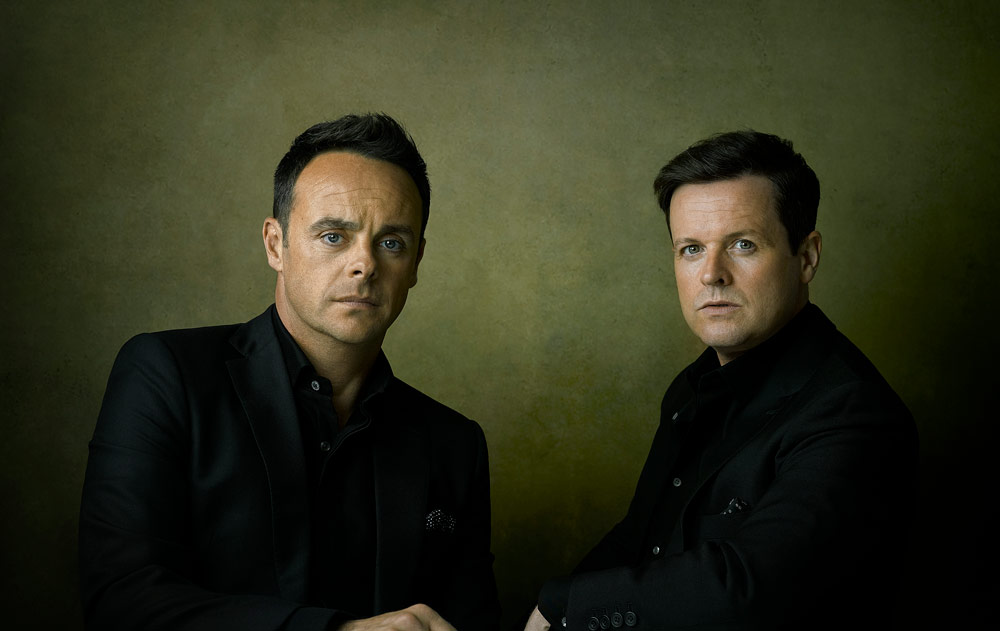
Comedy duo Ant and Dec. The deadpan expression is an example of Rory’s desire to avoid cliché. Photo Rory Lewis
To create a comfortable environment, I prioritise clear and open communication. Before the session, I discuss the concept, mood, and objectives of the shoot with the celebrity and their team. This ensures that everyone is on the same page and allows for any concerns or preferences to be addressed in advance.
During the shoot, I maintain a relaxed and friendly demeanour, making an effort to connect with the celebrity on a personal level. I find that establishing a casual and conversational atmosphere helps them feel more comfortable and allows their authentic personality to shine through in the photographs.
Additionally, I work efficiently and respect their time constraints. When time is short, I come prepared with a clear plan and direction. This helps streamline the process, ensuring that we can capture a variety of shots within the available timeframe.
Flexibility is also key when working with celebrities. They may have specific requests or ideas they want to explore, and I’m open to accommodating their vision while still incorporating my creative expertise. Collaboration is crucial, as it allows us to create portraits that align with their image and capture their essence.
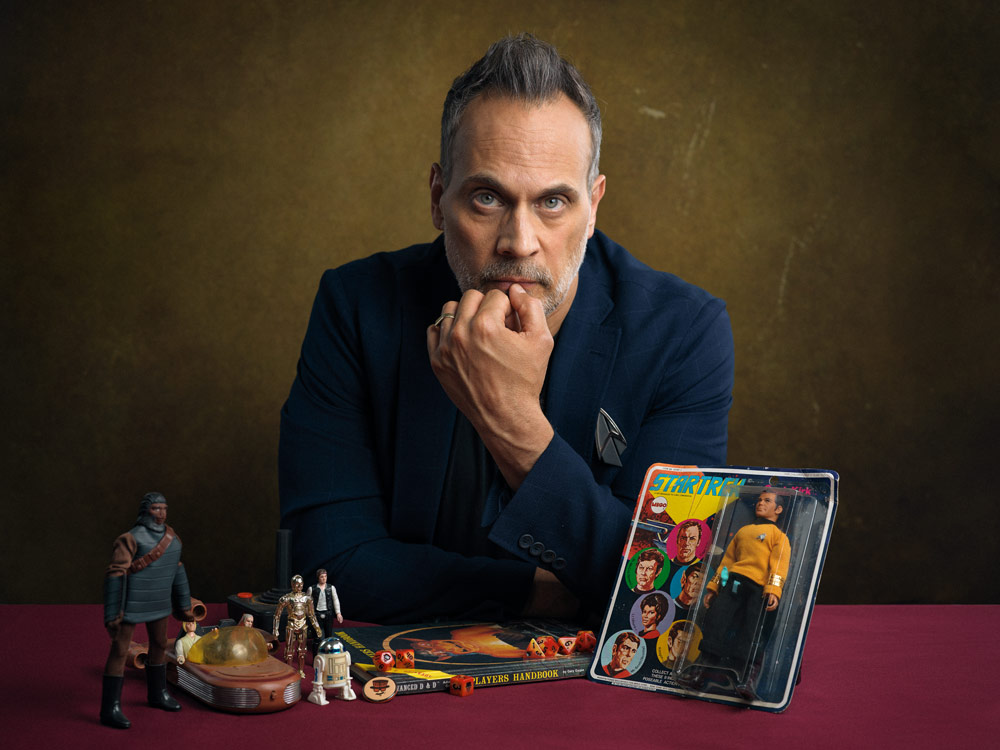
US actor, Todd Stashwick, Photo Rory Lewis
What are the biggest lessons you’ve learned about portraits over the years?
- Connect with your subject
Portrait photography is more than just capturing a person’s likeness, it’s about capturing their essence. Take the time to build a rapport with your subject and create a comfortable and trusting environment. When your subject feels at ease, their true personality will shine through, resulting in more authentic and compelling portraits. - Focus on storytelling
A great portrait tells a story or evokes emotions. Consider the narrative you want to convey through your images. Think about the subject’s background, experiences, and aspirations. Use composition, lighting, and posing techniques to create a visual story that engages the viewer and sparks their imagination. - Pay attention to lighting and composition
Lighting and composition are two fundamental elements that can make or break a portrait. Experiment with different lighting techniques, both natural and artificial, to create the desired mood and highlight your subject’s features. Likewise, explore various compositional techniques such as rule of thirds, leading lines, and negative space to add visual interest and guide the viewer’s gaze. - Embrace spontaneity and creativity
While planning is important, don’t be afraid to embrace spontaneity and let your creativity flow during a portrait session. Be open to unexpected moments and be ready to capture them. Encourage your subject to express themselves and try different poses or expressions. Sometimes the most remarkable portraits come from taking risks and thinking outside the box. Remember, portrait photography is an art form that goes beyond technical skills.
It’s about capturing the essence of a person, conveying emotions, and telling stories. By connecting with your subject, focusing on storytelling, mastering lighting and composition, and embracing spontaneity, you’ll be well on your way to creating impactful and captivating portraits.
About Rory Lewis
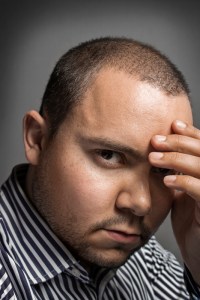 Rory Lewis is a British photographer known for his celebrity portrait photography. As this interview shows, his inspirations include fine art, including the works of Hans Holbein the younger, Caravaggio, and the German Expressionist movement of the 1920s. While Rory is noted for his portraits of celebrities and actors, he has also taking memorable images of many other people. See his website at www.rorylewis.studio
Rory Lewis is a British photographer known for his celebrity portrait photography. As this interview shows, his inspirations include fine art, including the works of Hans Holbein the younger, Caravaggio, and the German Expressionist movement of the 1920s. While Rory is noted for his portraits of celebrities and actors, he has also taking memorable images of many other people. See his website at www.rorylewis.studio
Further reading
Complete guide to portrait photography
Guide to fine-art photography
Best cameras for portrait photography
The best lenses for portrait photography
Portrait lighting tips from the pros
Best portrait tips from the pros







